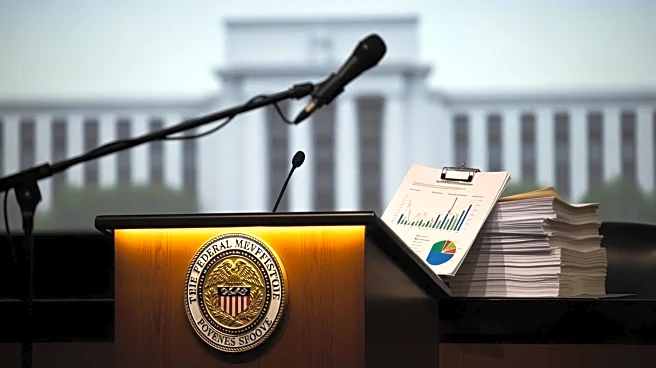What's Happening?
Federal Reserve Governor Christopher Waller has emphasized ongoing labor market weakness, supporting the case for continued rate cuts. Despite solid economic growth indicators, Waller noted that weak hiring
data suggests the need for cautious quarter-point rate reductions. He highlighted the inconsistency between GDP momentum and labor market performance, suggesting that a rebound in employment would reduce the pressure to cut rates. Waller's comments come amid delayed U.S. government employment reports, which have not altered the narrative of labor market challenges.
Why It's Important?
Waller's remarks underscore the Federal Reserve's focus on balancing economic growth with labor market conditions. The decision to cut rates could have significant implications for the U.S. economy, affecting borrowing costs, consumer spending, and business investment. Stakeholders, including businesses and consumers, may benefit from lower interest rates, potentially stimulating economic activity. However, persistent labor market weakness could pose challenges to achieving sustainable growth. The Fed's approach to rate cuts will be closely watched by investors and policymakers, as it influences economic stability and inflation targets.
What's Next?
The Federal Reserve is likely to continue monitoring labor market data and economic indicators to guide its monetary policy decisions. Waller's advocacy for cautious rate cuts suggests a measured approach to addressing economic uncertainties. The Fed may adjust its strategy based on future employment reports and GDP data. Policymakers and economists will be evaluating the effectiveness of rate cuts in stimulating the economy and addressing labor market issues. The ongoing dialogue around monetary policy will shape expectations for economic performance and interest rate trends.












